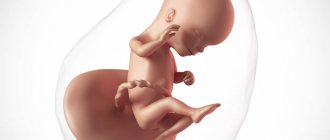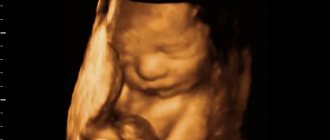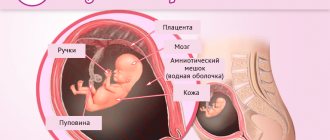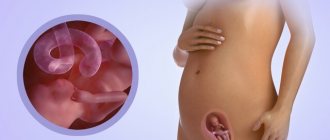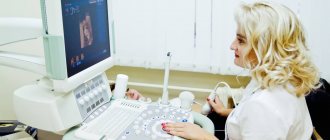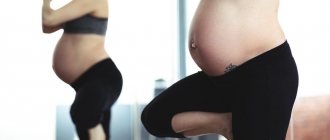Body changes and new sensations for women
During pregnancy, premature opening of the cervix should not be allowed. To maintain pregnancy, support the cervix and relieve excessive pressure on the rectum, as well as the bladder, at 21 weeks (sometimes later), for medical reasons, a woman is given an obstetric pessary (special ring). There is no need to worry: this virtually painless procedure takes only a few minutes. Apart from periodic examination of the cervix by a gynecologist and smear tests, no special actions are required when wearing a pessary during pregnancy. It has smooth edges, so it does not injure the uterus and vagina. The pessary is removed just before childbirth, at 36–38 weeks. It is as easy to remove as it is to be installed.
Risks for mother and baby
Twenty-one weeks of pregnancy is already the beginning of the sixth month. Now mother and child face various dangers. Let's look at what problems a girl may face.
Low placentation
The placenta acts as an important link between the woman and the fetus. Thanks to this organ, the child receives oxygen and other nutrients. With the successful development of pregnancy, the “baby place” is attached to the back wall of the genital organ, 6-7 cm higher from the uterine pharynx. If the placenta is lower, we are talking about low placentation in the woman.
Reasons for rejection:
- heart and vascular diseases in the mother;
- inflammatory diseases of the genital organs;
- fibroids, uterine underdevelopment;
- endometrial pathology due to infection;
- previous abortions and miscarriages;
- multiple pregnancy and so on.
What is the danger of this condition for mother and child? The fact is that in the lower part of the uterus there are fewer blood vessels. Due to this, the fetus receives less oxygen. In addition, due to the baby's increase in size, there is a risk of bleeding and placental abruption.
To prevent dangerous complications, a woman at 21 weeks of pregnancy with low placentation is recommended to adhere to the following tips:
- limit physical activity;
- try to minimize stress;
- relax more, walk in the fresh air;
- refuse intimacy;
- Visit your doctor regularly and take the necessary tests.
There is no specific treatment for low placentation during pregnancy. For women with this pathology, doctors prescribe sedatives and limit physical activity. The type of delivery depends on the location of the placenta. If it is located 5-6 cm above the uterine pharynx, complications, as a rule, do not arise. When the baby's place is located too close to the exit of the uterus, a Caesarean section is often performed.
Breech presentation of the fetus
For a normal birth process, the baby in the womb should be positioned head down. Sometimes it happens that the baby takes the wrong position, for example, butt down. In this case we are talking about breech presentation of the fetus. Why is this happening?
Causes related to maternal factors:
- Congenital or acquired pathologies of the structure of the uterus, as a result of which there is not enough space for the baby to turn over.
- Myoma in the area of the reproductive organ.
- Benign or malignant formations.
- The presence of scars in the uterine area due to previous abortions, Caesarean sections.
- Congenital weakness of the muscle fibers of the uterus and peritoneum.
Fetal factors of presentation include:
- Congenital pathologies in a child.
- Hypotrophy or poor development of certain organs and systems in the baby.
- Diseases of muscle, bone tissue and central nervous system in the fetus.
- Multiple pregnancy.
In addition, there are reasons for placenta previa. These include oligohydramnios or polyhydramnios, premature aging of the “children’s place”, a short umbilical cord or entanglement and some other factors.
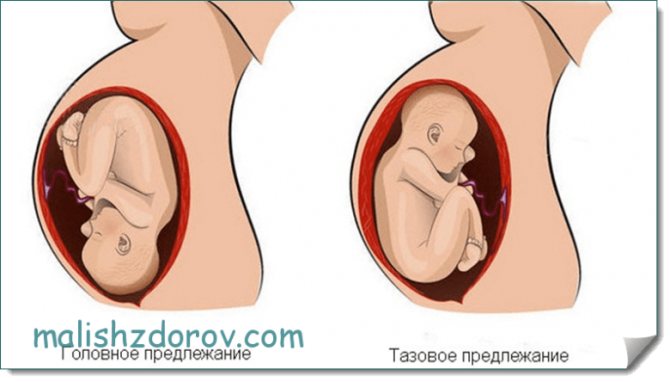
If at 21 weeks of pregnancy the above factors are absent, then by the time of birth the baby, as a rule, independently takes the correct position.
There is no drug treatment for breech presentation of the fetus. In most cases, the mother is prescribed special gymnastics. Exercises help the baby turn in the right direction in 70% of cases. You can see how to perform physical therapy in this video.
Reviews from many girls indicate that at 21 weeks of pregnancy, gymnastics gives excellent results. If breech presentation of the fetus is diagnosed at 34-37 weeks, gymnastics does not give the desired result. Such mothers are offered to turn the baby onto his head in a hospital setting. The procedure is performed by a specialist, after which a special bandage is applied to prevent the baby from turning over into the wrong position again.
Learn more about breastfeeding now. Read useful information here.
Short cervix
Another pathology that threatens miscarriage is a short cervix. Normally, in a woman, its length should be at least 2-2.5 cm. If the cervix is shorter, the risks of miscarriage increase significantly.
The reasons for shortening lie in heredity, congenital abnormalities, as well as injuries to the organ during abortions and other medical procedures. Frequent physical activity often leads to shortening of the cervix; this pathology is often observed in female athletes.
The danger of this deviation is that due to the rapid growth of the baby, the cervix cannot stand it and opens prematurely. In addition, the birth process itself is disrupted. Such patients often experience rapid labor, severe ruptures and other negative consequences.
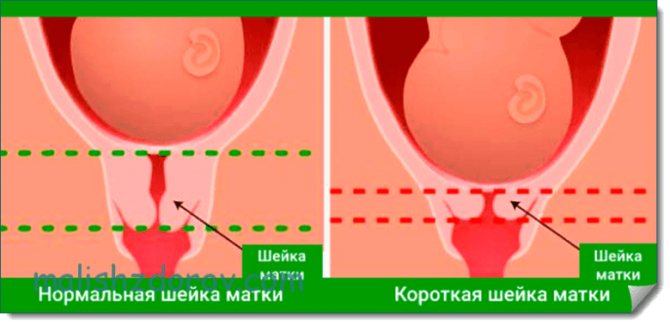
A short cervix often leads to the development of hypertension. At the same time, the pregnant woman’s back hurts, her stomach seems to turn to stone, and there is tension. If a woman’s water breaks at 21 weeks of pregnancy, this is a reason to immediately visit a gynecologist.
What to do? Patients with this diagnosis should be under close medical supervision. It is important to follow a daily routine, eat right, avoid physical activity, and get more rest. Wearing a bandage is mandatory. With proper monitoring and following all the specialist’s recommendations, in most cases it is possible to carry and give birth to a healthy baby.
Late toxicosis
Toxicosis during pregnancy can also occur in later stages. This condition is often diagnosed in mothers suffering from various diseases of the kidneys, liver, heart and other organs. Let's figure out why this happens.
Late toxicosis or gestosis is caused by a violation of the water-salt balance in the body. As a result, the permeability of the vascular walls increases, which leads to the removal of fluid into the nearest tissues. This is where swelling appears. In addition, the woman feels nauseous, has a headache, kidney problems occur, blood pressure rises, and weight gain decreases.
Treatment of late toxicosis should be carried out exclusively under the guidance of an experienced doctor. The specialist selects the appropriate therapy. Often a pregnant woman needs to be in a hospital setting. It is within the power of the mother herself to perform the following actions:
- regularly attend antenatal clinic;
- adhere to proper nutrition;
- rest more;
- take a walk in the fresh air every day;
- to refuse from bad habits;
- try to eliminate stress.
Any worsening of the condition requires consultation with a specialist.
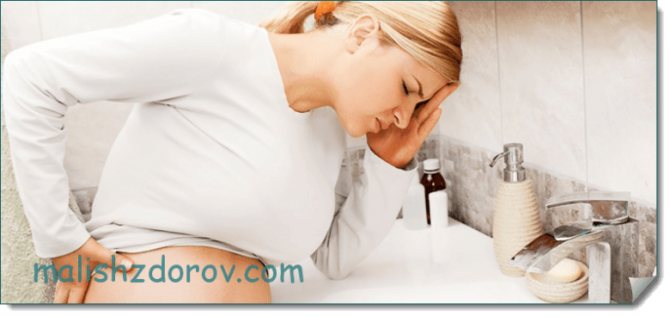
Do not self-medicate, this is extremely dangerous for mother and baby.
Tests and ultrasound
We remind you that 21 weeks is the deadline when the expectant mother can undergo a second planned ultrasound scan during pregnancy. With the help of an ultrasound at 21 weeks, a woman will not only receive an answer to the question of how her baby is developing, but will also find out who she can expect in the near future: a boy or a girl. Sometimes the received data upsets the mother. This is not about the gender of the fetus (in some cases, the baby may not show at all what curious parents expect from him), but about possible deviations in the child’s development. Stay calm and remember: the screening result is not the ultimate truth. If any anomalies are detected, the doctor will suggest that the pregnant woman take additional tests and undergo a series of clarifying examinations.
What should you expect?
The 21st seven-day period differs from the 20th in that the pregnant woman quickly gains weight. The rate of weight gain is 50 percent of the total. The mother gains weight due to the fact that the fetus is actively accumulating fat. The condition of the expectant mother can be called funny, since her gastronomic tastes become very specific.
Due to the increase in weight, the young woman is bothered by a feeling of discomfort or pain in the back. This feeling can be easily relieved with special exercises. They should only be performed if there is no contraindication.
Sometimes a young lady complains of unpleasant sensations that arise due to sudden jumps in blood pressure. If the expectant mother experiences discomfort while doing the exercises, the exercises should be stopped. If a woman is in pain, she needs to reduce her load.
The 21st week, like the 20th, suggests the progression of insomnia. It is caused by urinating too frequently. Many young ladies experience the following sensations:
- pain and pulling in the lower abdomen;
- hemorrhoids develop;
- bloody discharge appears from the anus;
- back hurts;
- abundant vaginal discharge is formed;
- low-painful “training contractions” occur;
- appetite becomes “brutal” (this condition is relevant until the onset of the 30th week);
- shortness of breath appears;
- heartburn develops;
- the lower limbs begin to swell.
Also, a young lady carrying a fetus visits the toilet more often than usual. The urge to urinate occurs especially often at night. Young ladies carrying a fetus complain that their lower abdomen is tight. This is associated with constipation or the fact that the uterine ligaments are too tight.
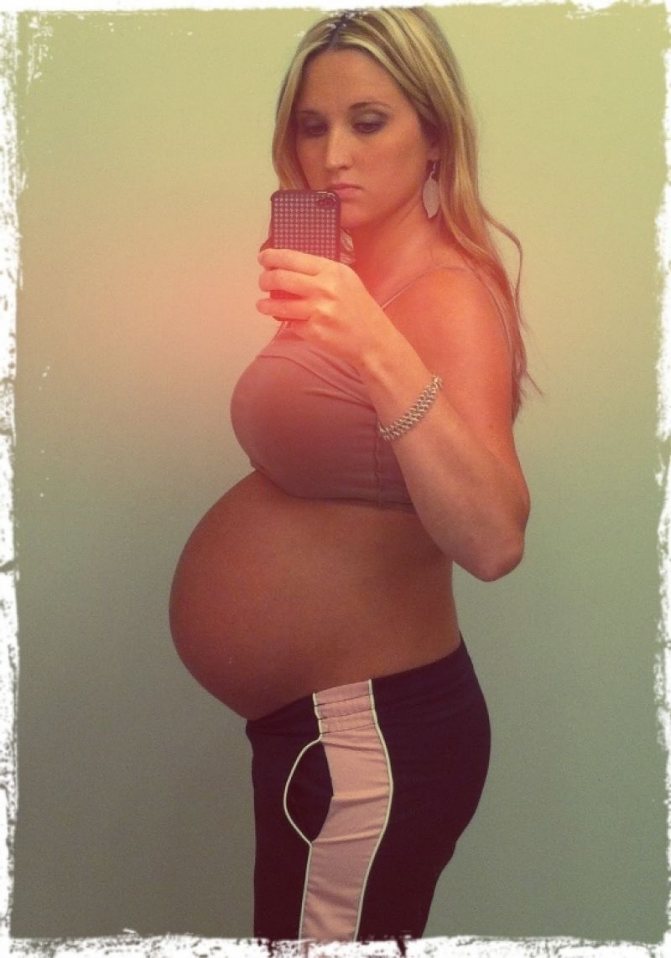
Nutrition at 21 weeks of pregnancy
The expectant mother's body still needs a balanced amount of vitamins, proteins, carbohydrates and mineral salts. Choose dishes with the least fat content, but eating only low-fat foods is also not recommended. To prevent your child from being born with allergies, do not overuse exotic fruits, citrus fruits and strawberries. Avoid foods that contain a large amount of cholesterol and therefore impede the functioning of the liver (sausages, sausages, butter, fatty meats, lard and baked goods). The future mother's diet must include the following products: meat (preferably dietary), fish, cereals, cottage cheese, vegetables, herbs.
Tips for an expectant mother to have an easy pregnancy
| Nutrition |
|
| Rest |
|
| Activity |
|
| Well-being |
|
Vitamins
Now the expectant mother needs to regularly take calcium supplements prescribed by the doctor. Otherwise, her teeth may “fly”, her nails will begin to break, and her hair will fall out. Calcium is also found in dairy products: kefir, low-fat cottage cheese and milk. A simple, but proven by our grandmothers, way to get the required amount of calcium during pregnancy is to grind the shells of boiled eggs in a mortar to flour and add it to food.
In addition to calcium, do not forget about vitamins A, B, D, C and E - they also play an important role in the 21st week of the “interesting situation”.
Lifestyle
Start playing music with your child! Now, at 21 weeks of pregnancy, he can already hear and distinguish sounds. It is known that music stimulates the brain and develops an inner sense of beauty. However, expectant mothers should not get carried away with melodies that contain a large number of low frequencies and sharp or high sounds. This may be unpleasant for the baby. Opt for the classics: Mozart, Tchaikovsky, Vivaldi. It has been proven that children learn and in the future prefer exactly the music that they listened to while still in their mother’s belly.




